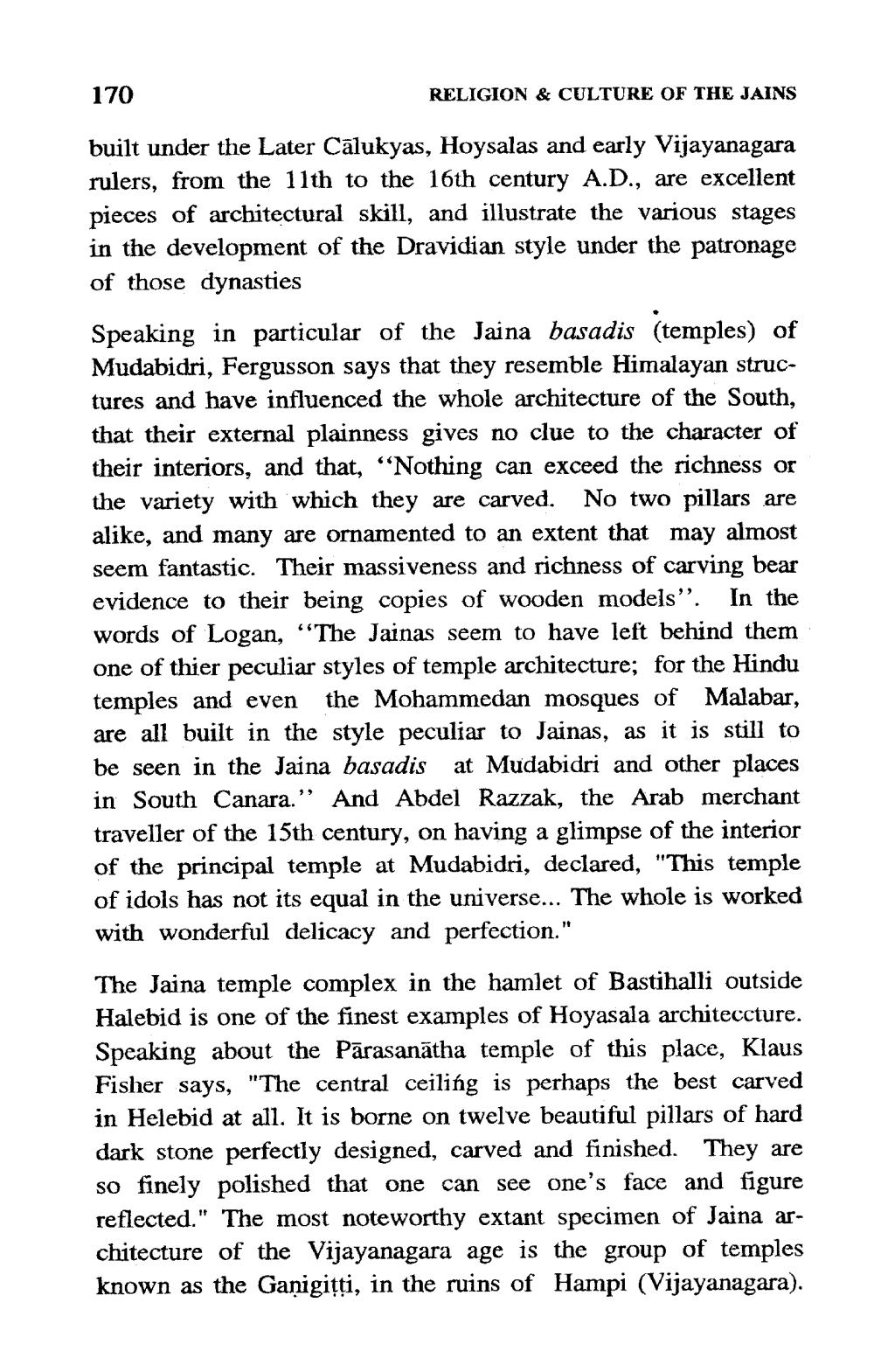________________
170
RELIGION & CULTURE OF THE JAINS
built under the Later Cālukyas, Hoysalas and early Vijayanagara rulers, from the 11th to the 16th century A.D., are excellent pieces of architectural skill, and illustrate the various stages in the development of the Dravidian style under the patronage of those dynasties Speaking in particular of the Jaina basadis (temples) of Mudabidri, Fergusson says that they resemble Himalayan structures and have influenced the whole architecture of the South, that their external plainness gives no clue to the character of their interiors, and that, “Nothing can exceed the richness or the variety with which they are carved. No two pillars are alike, and many are ornamented to an extent that may almost seem fantastic. Their massiveness and richness of carving bear evidence to their being copies of wooden models”. In the words of Logan, “The Jainas seem to have left behind them one of thier peculiar styles of temple architecture; for the Hindu temples and even the Mohammedan mosques of Malabar, are all built in the style peculiar to Jainas, as it is still to be seen in the Jaina basadis at Mudabidri and other places in South Canara.” And Abdel Razzak, the Arab merchant traveller of the 15th century, on having a glimpse of the interior of the principal temple at Mudabidri, declared, "This temple of idols has not its equal in the universe... The whole is worked with wonderful delicacy and perfection."
The Jaina temple complex in the hamlet of Bastihalli outside Halebid is one of the finest examples of Hoyasala architeccture Speaking about the Pārasanātha temple of this place, Klaus Fisher says, "The central ceiling is perhaps the best carved in Helebid at all. It is borne on twelve beautiful pillars of hard dark stone perfectly designed, carved and finished. They are so finely polished that one can see one's face and figure reflected." The most noteworthy extant specimen of Jaina architecture of the Vijayanagara age is the group of temples known as the Ganigițți, in the ruins of Hampi (Vijayanagara).




